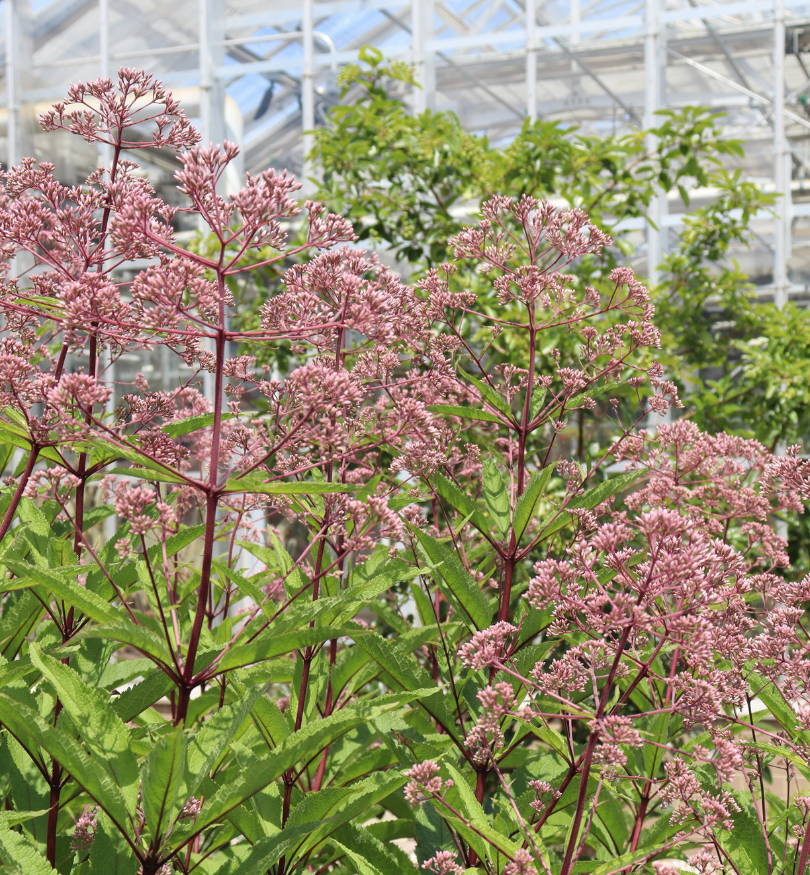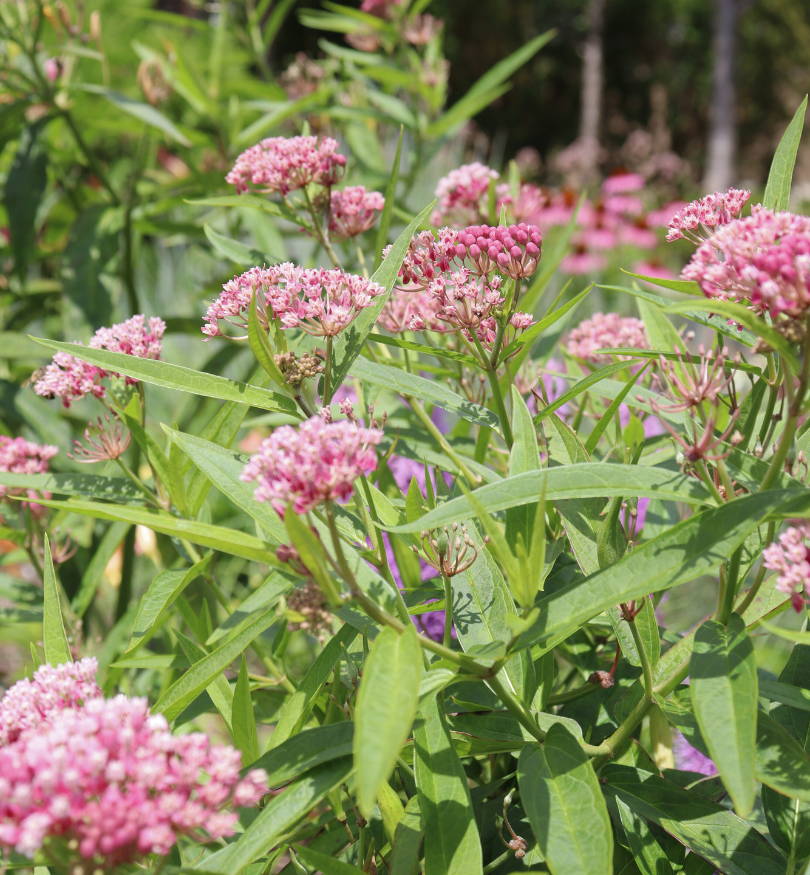Joe Pye Weed vs. Milkweed: What's The Difference?

All About Joe Pye Weed:
Big, Bright Flower Clusters
No butterfly garden is complete without Joe Pye weed! The big pink star-like whorls of flowers stand tall atop deep red stems, adding texture and height to your garden throughout the summer. Use Joe Pye to line a perennial garden and create a privacy hedge, or use 'Little Joe' to attract pollinators in small spaces. The possibilities are endless for this easy-to-grow perennial.
Native American History
The name Joe-Pye is suspected to derive from a Native American medicine man and Mohican sachem (tribal leader) named Joseph Shauquethqueat, who used the plant as medicine to treat fevers and other illnesses in the early 1800s. Many First Nations members used wildflowers medicinally, and their white neighbors would draw associations between this specific plant and its healing properties through the man they knew as Joe-Pye. Consider learning more about Joseph Shauquethqueat and his remarkable medicinal work, tribal business, and just how much Native American practices helped shape what we know about plants today in the articles here:
All About Milkweed:
Host Plant To The Monarch Butterfly
Without milkweed we wouldn't have Monarch butterflies! Milkweeds are essential for the Monarch lifecycle, and their relationship includes more than just swapping nectar for pollination. Caterpillars exclusively feed on their leaves, which are filled with cardenolides. Cardenolides are stored in the bodies of Monarch caterpillars and butterflies as a defense against predators, letting them flourish all season long. Learn more about why pollinators love milkweed (and why you should too).
Easy To Grow, Maintenance-Free
Aside from its pollinator power, milkweed is also a beloved perennial because of its gorgeous flower clusters, which are full of nectar and can appear in an array of colors like pink, white, yellow, and orange (butterfly weed!). It easily grows in full sun areas with medium soil moisture and requires no special winterizing or pruning to keep the flowers coming all summer long. Come autumn, the flowers give way to seed pods that provide food for birds like finches and sparrows.
Key Similarities:
- Joe Pye weed and milkweed thrive in full sun environments with moist soil, which is why they're often planted near each other.
- Both perennials can feature lovely pink flower clusters and top-high stems full of nectar and pollen that pollinators love.
- Over three dozen pollinators are host plants to milkweed and Joe Pye weed.
- There is no need to worry about pesky critters; Joe Pye weed and milkweed are both rabbit and deer-resistant.
- Milkweed and Joe Pye weed both naturally grow in damp or moist sites, making them well-suited for gardens along rivers, ponds, or depressions that hold water.
Key Differences:
- Milky sap will be secreted when milkweed leaves or stems are broken. Joe Pye weed will not secrete milky sap.
- Joe Pye weed does not form seed pods like milkweed does in late summer/early fall.
- Milkweed is the sole host plant for the Monarch butterfly.
- Joe Pye weed is typically taller and wider than most milkweed plants unless you purchase a dwarf cultivar.
- The spear-shaped leaves of Joe Pye weed are larger and courser than milkweed leaves.
- Milkweed flower heads are smaller and feature more tightly clustered florets than Joe Pye weed flowers.



